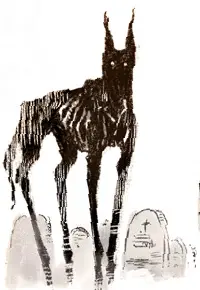“Have you ever read any H. P. Lovecraft?” Ted Levine’s Hunter S. Thompson-inspired character, counterculture author Thomas Blackburn, asks intrepid journalist Anne Roland (Katia Winter) in 2013’s Banshee Chapter.
When Anne says she hasn’t, Thomas continues: “Wrote a story in about 1930-something-or-other, was about a scientist who created an electronic device, a giant tuning fork. It emitted a resonance wave. It stimulated anybody who was nearby, their pineal gland, allowing them to experience planes of existence outside the scope of accepted reality. He would see incredible, sometimes horrible things — these… entities. He kept turning it up higher and higher, ‘cause he was really getting off on seeing this shit. But it was too late when he realized that the entities… they could see him too.”
Thomas is referring to the short story “From Beyond,” first published in 1934. From the outside, it would be difficult to spot that Banshee Chapter is a loose adaptation of this tale, or of any Lovecraft story for that matter. There are no tentacles, no blasts of that pinkish-purple light that we’ve all collectively decided is the color out of space. Instead, director Blair Erickson’s film leverages proven real-world conspiracy theories to make us question how many horrors we might find if we peeled back the corner of our accepted reality and peeked behind…


I think only if you mark it NSFW? Not a huge deal, but a bit of a spoiler.